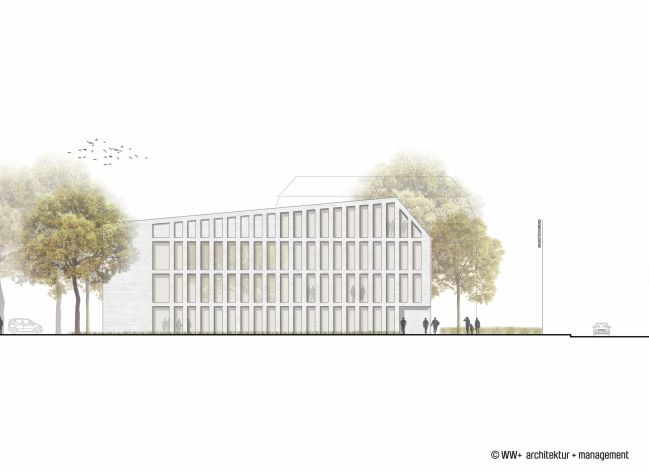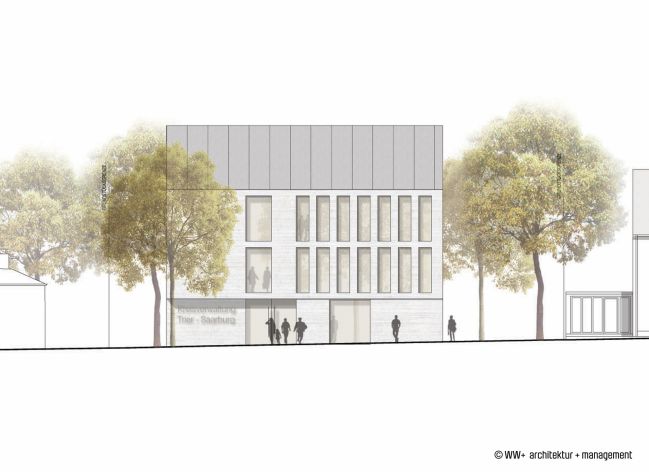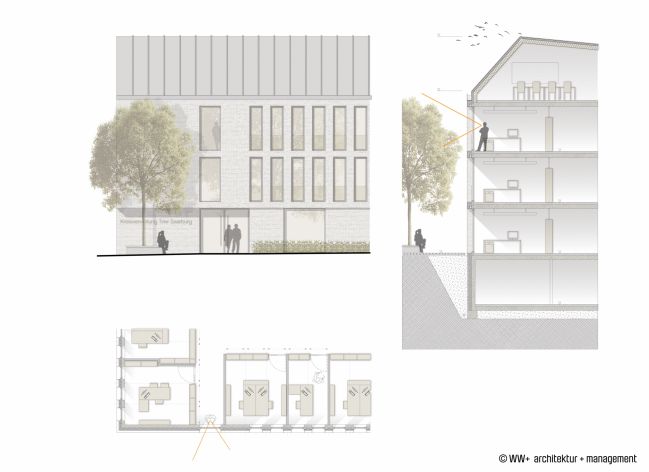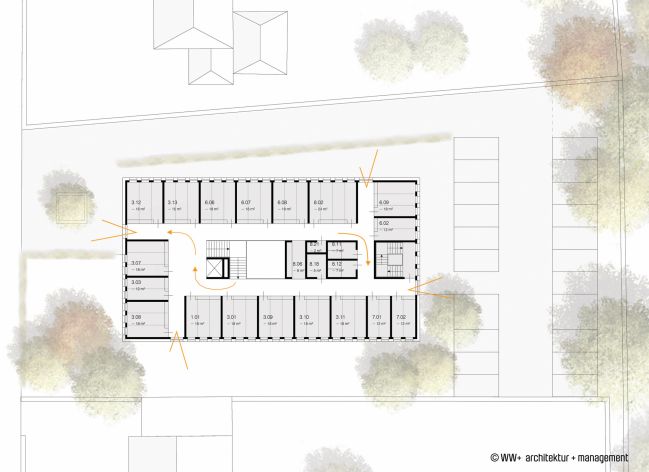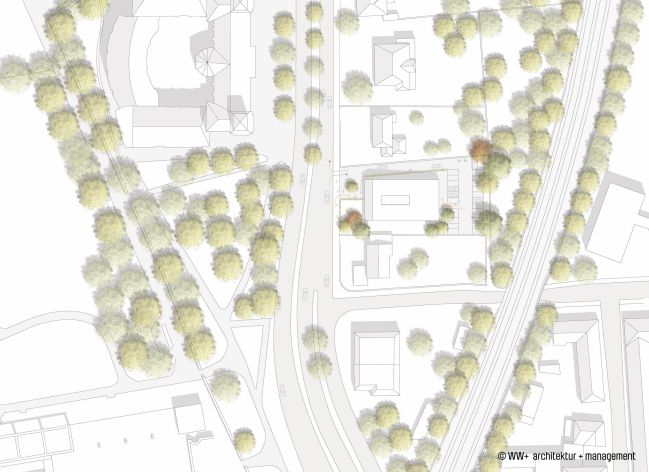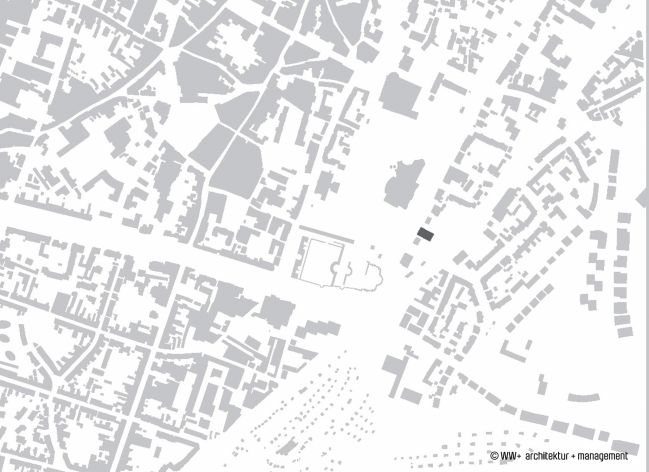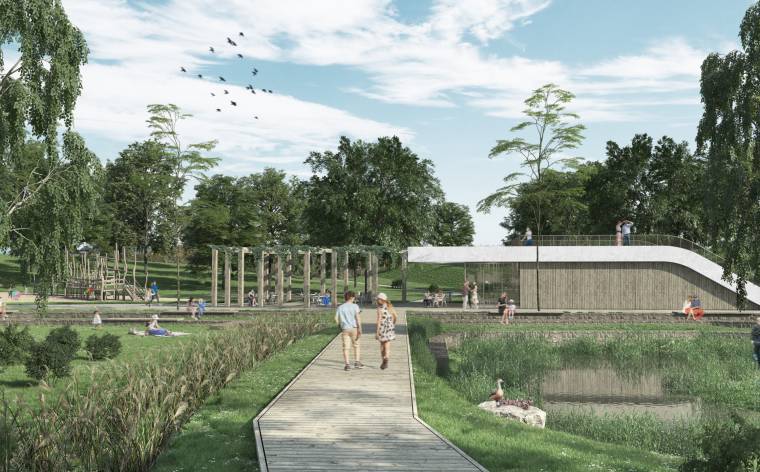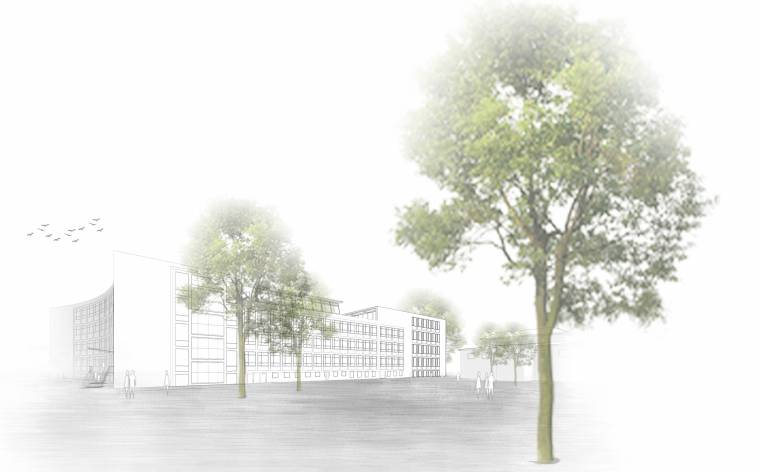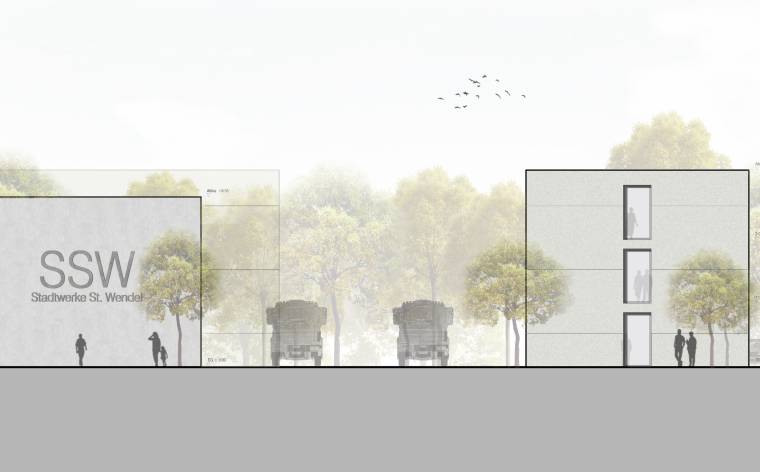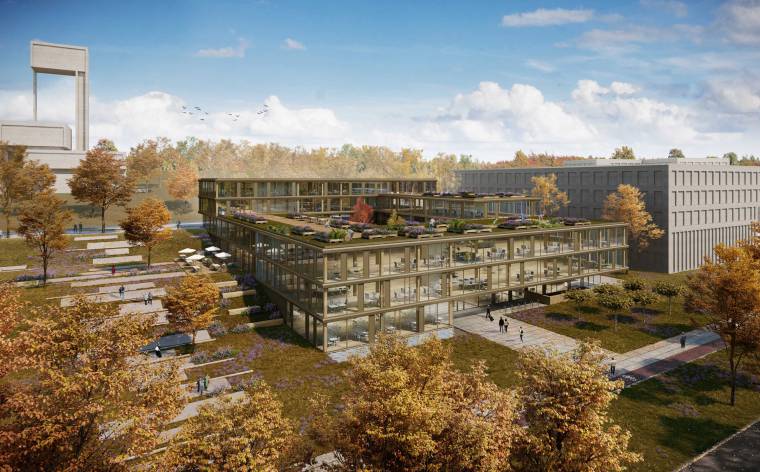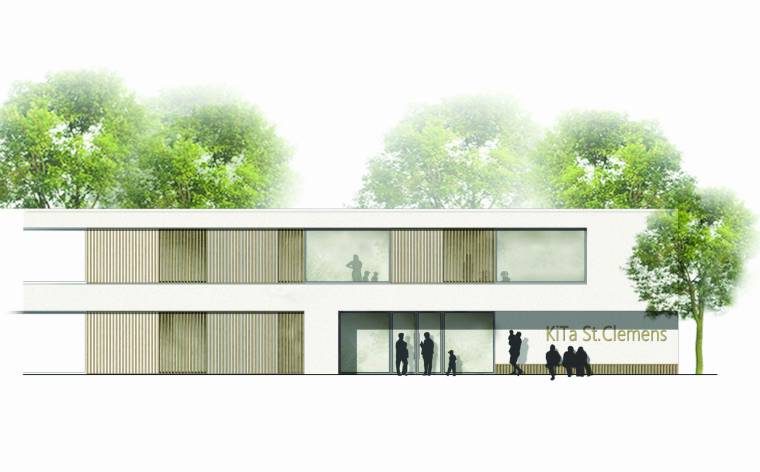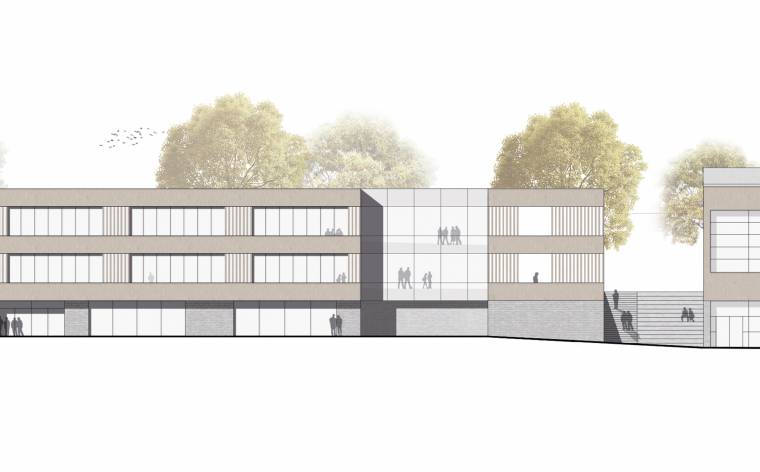Category :
Architecture competitions
Project :
Client :
Kreis Trier-Saarburg
Country :
Germany
Area :
gfa 2.800 m²
Planning period :
10/2017 - 11/2017
Share on
project New construction of an administrative building for the district administration of Trier-Saarbrug, 'Ostallee 71', Trier (GER), client Kreis Trier-Saarburg (GER) architectur services WW+, Esch-sur-Alzette (LUX) / Trier (GER), gfa 2,800 m², ufa 1,400 m² gv 9,760 m³ competition phase 10/2017 - 01/2017
Genius Loci
The land for this project is located in the centre of the Trier-Ost residential area, southeast of the city centre of Trier. The land has been deemed an optimal location for the construction of a new administration building in the Trier-Saarburg administrative district due to its central location and close proximity to the main building of the Trier-Saarburg administrative centre in the Willy-Brandt-Platz. The favourable traffic situation on the west side of the Ost Allee avenue, as well as the link to the well-developed cycling path system of the city of Trier are further reasons for this choice of location. Some of the most important cultural monuments of Trier are located in the immediate vicinity of the site. These include the Roman Imperial Baths and the 1877 Rhenish State Museum facing the site. The Constantine Basilica, the Prince Elector Palace and the Roman Amphitheatre are also in the immediate vicinity. Together with the villa-like buildings from the 19th century, these buildings shape the urban planning environment. The basic framework of the design is underpinned by the implementation of the desired spatial allocation plan, a respectful treatment of the urban planning and cultural-historical context within the framework of construction and economic regulations.
Architectural concept
The present draft envisions a compact structure, which faces the street side of the building profile of the neighbouring buildings. With its building width of 18.30 meters and its ridge height of 14.00 meters, it assumes the proportions of the surrounding buildings. Through its sloping roof to the Ost Allee, the three full floors of the rectangular building blend harmoniously into the existing building structure. A perforated theme is prominent in the design of the facade and implemented in a contemporary manner.
Functional solution
The building is accessed from the Ost Allee at ground level. Employees and visitors enter the spacious, bright entrance with its waiting area via the green forecourt, which offers you a place to linger with its attractive furniture. From there, they reach the various floors of the building via the central entry staircase. Accessibility to the building is provided by an elevator and wide corridors and doors.
The bright access areas with their astutely placed openings allow numerous panoramas and views and make the building a friendly and inviting place. Living and waiting areas create a pleasant atmosphere, inviting visitors to linger. They are lit by dome lighting above the stairwell gallery.
All office levels are connected by open space, promoting internal communication and allowing a departmental area to extend over two floor levels. Meeting rooms, tea kitchens and toilet areas are arranged centrally on each level which are not only extremely practical, but also optimize internal workflows.
Office cubicles for one to two employees are arranged like a windmill around the central operations area. The open floor plan structure of the building allows easy orientation and creates a pleasant working atmosphere. Room sizes are set out in six square meter increments. They vary between 12 sqm for a single office and up to 18 sqm for a two-person office. In order to be remain flexible for future reconfigurations, the building design is based on the skeleton construction concept. Modular office partitions make it possible to respond to changing workplace situations. Bright and spacious work spaces guarantee effective and structured work.
Materials concept
With regard to operating and maintenance costs, care is taken in the selection of materials to ensure sustainability and to keep costs down. Limiting construction and upgrading to a few, authentic materials produces simple and timeless aesthetics. The wood and plaster elements used in the interior create a contemporary, high-quality and pleasant appearance.
The location of the building site between the train tracks and the road demands a hardy and resistant facade material. Exterior walls are therefore proposed in double-shell brickwork, made of a bright, long-format brick. Like the historical building material of the nearby Roman buildings, the new building transitions naturally between the neighbouring Imperial Baths or the Constantine Basilica and the plaster facades of the neighbouring buildings.
The longevity and robustness of the material underscores the value of the building and minimizes significant building maintenance costs. Because of the skeleton construction concept, the proportion of load-bearing interior walls is reduced to a minimum. The fine-grained, light plaster used there features high resistance and exudes a pleasant feel.
The office partitions are designed to be lightweight and thus allow a flexible and adaptable room layout. A modular wall system, made of clear oak, forms the basic structure of the individual office units. Skylights connect the office and traffic areas optically while ensuring adequate privacy for each employee.
Energy system
The heating system is an air-water heat pump, in conjunction with a floor heating system. This can also contribute to storage mass activation for cooling in the summer. For the hygienic air changes, a central ventilation unit is planned featuring heat recovery by means of a rotary heat exchanger. This also allows moisture recovery in winter that humidifies overly dry air. Air supply ducts cover the office areas, while returns are located in the corridors and toilet areas, so that the total air flow volumes can be reduced to a minimum. The lighting concept calls for energy-saving LED lighting with a long service life.
Contact us !
